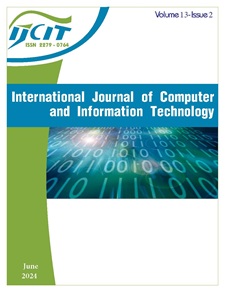Trends in Water Consumption Patterns Amongst Various Utility Users in Fort Portal City
Analysis of National Water and Sewerage Corporation (NWSC) [January 2009 to December 2015 data]
DOI:
https://doi.org/10.24203/qy47h929Keywords:
Water consumption patterns, Seasonal variations, Factors influencing water consumption, , Infrastructure developmentAbstract
This study investigates trends in water consumption patterns among diverse utility users in Fort Portal City, Uganda, by analyzing data obtained from the National Water and Sewerage Corporation (NWSC) spanning the period from January 2009 to December 2015. The objectives of the study are threefold: 1) to analyze long-term water consumption trends, 2) to identify seasonal variations in water consumption, and 3) to assess the factors influencing water consumption.
The analysis of NWSC data reveals a consistent increase in overall water demand over the study period. This growth is attributed to factors such as population expansion, urbanization, and economic development within the city. Furthermore, we observe variations in water usage patterns among different user categories, with residential users showing steady growth and industrial users displaying fluctuations in demand.
Seasonal variations in water consumption are pronounced, with dry seasons witnessing heightened water use, particularly by residential and commercial users. These findings highlight the necessity for adaptive water management strategies to address peak demands during dry periods and advocate responsible water use practices.
Multiple factors influence water consumption, including population dynamics, economic activities, and NWSC policies and pricing structures. This necessitates a multifaceted approach to water resource management, tailored to the specific needs of diverse user categories.
The implications of this study underscore the importance of infrastructure development, water storage solutions, and resource allocation to meet the growing water demand in Fort Portal City. Public awareness campaigns, infrastructure maintenance, and collaborative efforts among stakeholders are recommended to promote responsible water use and equitable access to water services.
References
[1]. Tureczek, A.M.; Nielsen, P.S. Structured Literature Review of Electricity Consumption Classification Using
Smart Meter Data. Energies 2017, 10, 584. [CrossRef]
[2]. Friedman, J.; Hastie, T. The Elements of Statistical Learning, 1st ed.; Springer: Berlin/Heidelberg, Germany, 2008.
[3]. Al-otaibi, R.; Jin, N.; Wilcox, T.; Flach, P. Feature Construction and Calibration for Clustering Daily Load
Curves from Smart-Meter Data. IEEE Trans. Ind. Inform. 2016, 12, 645–654. [CrossRef]
[4]. Madsen, H. Time Series Analysis; Chapman & Hall/CRC: Boca Raton, FL, USA, 2008.
[5]. Wasserman, L. All of Statistics; Springer: Berlin/Heidelberg, Germany, 2003; Volume C.
[6]. Tureczek, A.M.; Nielsen, P.S. Structured Literature Review of Electricity Consumption Classification Using
Smart Meter Data. Energies 2017, 10, 584. [CrossRef]
[7]. Wasilewski, F. PyWavelets; 2006; Available online: https://pywavelets.readthedocs.io/en/latest/ (accessed on 20 August2023).
[8]. Li, T.; Li, Q.; Zhu, S.; Ogihara, M. A survey on wavelet applications in data mining. ACM SIGKDD
Explor. Newsl. 2002, 4, 49–68. [CrossRef]
[9]. Wasserman, L. All of Nonparametric Statistics; Springer: New York, NY, USA, 2006. [CrossRef]
[10]. Barford, L.A.; Fazzio, R.S.; Smith, D.R. An Introduction to Wavelets; Technical Report HPL-92-124; Hewlett-Packard Labs: Bristol, UK, 1992; Volume 2, pp. 1–29. 36.
[11]. Morchen, F. Time Series Feature Extraction for Data Mining Using DWT and DFT; 2003; pp. 1–31. Available online:
http://www.mybytes.de/papers/moerchen03time.pdf (accessed on 20 August 2023).
[12]. Perry, P.O. Cross-Validation for Unsupervised Learning. arXiv, 2009, in press.
[13]. Kang, J.; Lee, J. Electricity Customer Clustering Following Experts’ Principle for Demand Response
Applications. Energies 2015, 8, 12242–12265. [CrossRef]
[14]. Tureczek, A. Clustering District Heat Exchange Stations Using Smart Meter Consumption Data.
In Proceedings of the 3rd International Conference on Smart Meter Energy Systems and 4th Generation
District Heating, Copenhagen, Denmark, 13 August 2017; p. 24.
[15]. Granell, R.; Axon, C.J.; Wallom, D.C.H. Impacts of Raw Data Temporal Resolution Using Selected Clustering
Methods on Residential Electricity Load Profiles. IEEE Trans. Power Syst. 2015, 30, 3217–3224. [CrossRef]
[16]. Pedregosa, F.; Varoquaux, G.; Gramfort, A.; Michel, V.; Thirion, B.; Grisel, O.; Blondel, M.; Prettenhofer, P.;
Weiss, R.; Dubourg, V.; et al. Scikit-learn: Machine Learning in Python. J. Mach. Learn. Res. 2012, 12,
2825–2830.
Downloads
Published
Issue
Section
License
Copyright (c) 2024 SAMUEL OCEN, Derrick Mwanje, Peter Mugabyomu

This work is licensed under a Creative Commons Attribution-NonCommercial 4.0 International License.
The articles published in International Journal of Computer and Information Technology (IJCIT) is licensed under a Creative Commons Attribution-NonCommercial 4.0 International License.


